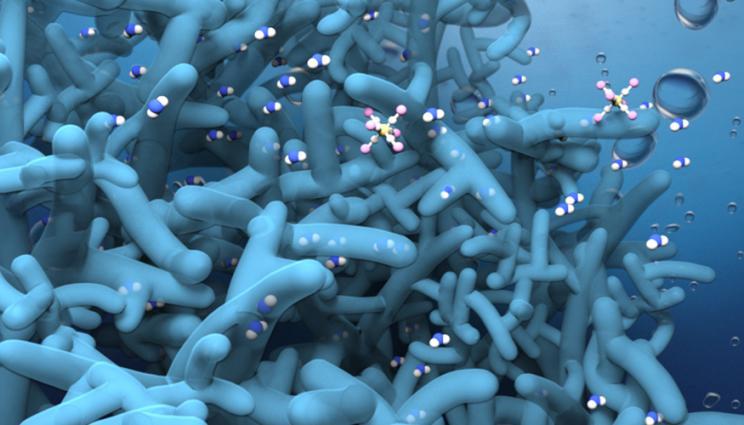Direct membrane filtration methods are often used to concentrate pathogens (viruses or bacteria). However, they may suffer from severe membrane fouling and clogging. LLNL scientists have developed a more simple and rapid method for the purification/concentration of biological particles that avoids sample clogging.
This invention consists of a functionalized membrane (e.g. polyethylene glycol (PEG)) and osmosis or electric potential as a driving force. The PEG membrane provides high biological particles separation and prevents sample for clogging due to the strong hydration of functional polymers layer and their resistance to protein adsorption. The device is comprised of three chambers: 1) a feed and blood cells chamber, 2) a viral or bacterial concentration chamber, and 3) a cell waste chamber (see Figure). Each chamber is divided by membranes with different pore sizes and filled with electrolyte or draw solution to transport target solutes. The progressive filtration from the first chamber to the last chamber can be carried out by progressively reducing the size of the pore of the filtering membranes, in order to progressively filter out smaller particles. Unlike other pressure-driven membrane filtration process, this invention utilizes the osmotic pressure difference induced by the draw solution as the primary driving force to separate the particles, therefore, limiting the requirement for equipment such as vacuum pump and centrifuge. Additionally, the separated target solutes in each chamber can also be easily separated by a magnetic field if magnetic nanoparticles are used.
- Limiting the requirement for equipment such as vacuum pump and centrifuge
- Separated target solutes in each chamber can also be easily separated by a magnetic field using magnetic nanoparticles
- This device can be used by non-technical staff in a non-hospital-based setting
- A simple diagnostic platform for rapid detection of bloodstream infections
- Polymerase chain reaction sample preparation
- Point-of-care diagnosis
- Viral/bacterial separation and concentration
- Membrane filtration
LLNL has secured a patent (US Patent 9,861,939) covering this technology (LLNL Internal Case # IL-12916)


